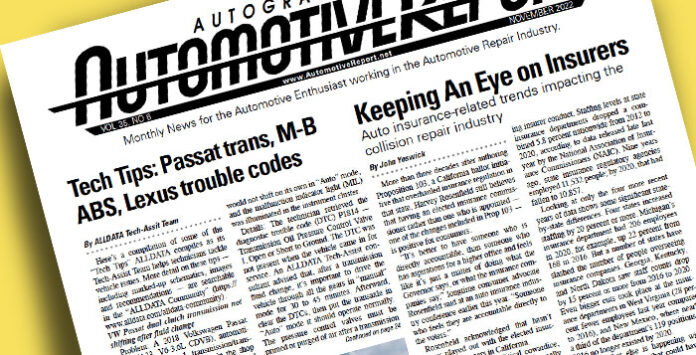Auto insurance-related trends impacting the collision repair industry
By John Joswick
More than three decades after authoring Proposition 103, a California ballot initiative that overhauled insurance regulation in that state, Harvey Rosenfield still believes that having an elected insurance commissioner rather than one who is appointed — one of the changes included in Prop 103 — is positive for consumers.
“It’s better to have someone who is directly accountable, than someone who has aspirations for a higher office and feels like it’s just a matter of doing what the Governor says, or what the insurance companies say,” longtime consumer advocate Rosenfield said at an auto insurance industry conference earlier this year. “Someone who feels they are accountable directly to the voters.”
Rosenfield acknowledged that hasn’t always played out with the elected insurance commissioners in California.
“Either because of political cowardice, or their predisposition, or occasionally being beholden to the insurance companies either directly or indirectly, it’s gone sideways,” he said. “But I think it’s still better than it was before.”
Rosenfield’s comments come during a period when many states have slashed the size of the agencies charged with overseeing insurer conduct. Staffing levels at state insurance departments dropped a combined 5.8 percent nationwide from 2012 to 2020, according to data released late last year by the National Association of Insurance Commissioners (NAIC). Nine years ago, state insurance regulatory agencies employed 11,532 people; by 2020, that had fallen to 10,857.
Looking at only the four more recent years of data shows some significant state-by-state differences. Four states increased staffing by 20 percent or more. Michigan’s insurance department had 206 employees in 2020, for example, up 22 percent from 168 in 2016. But a number of states have slashed the number of people overseeing insurance companies. Georgia, Kentucky, and North Dakota saw staff counts drop by 15 percent or more from 2016 to 2020. Even bigger cuts took place at the insurance departments in West Virginia (28 percent fewer employees last year compared to 2016), and New Mexico, where nearly a third of the department’s 119 positions in 2016 no longer existed by 2020.
Here’s what else is happening within the insurance industry that could have an impact on collision repairers …



